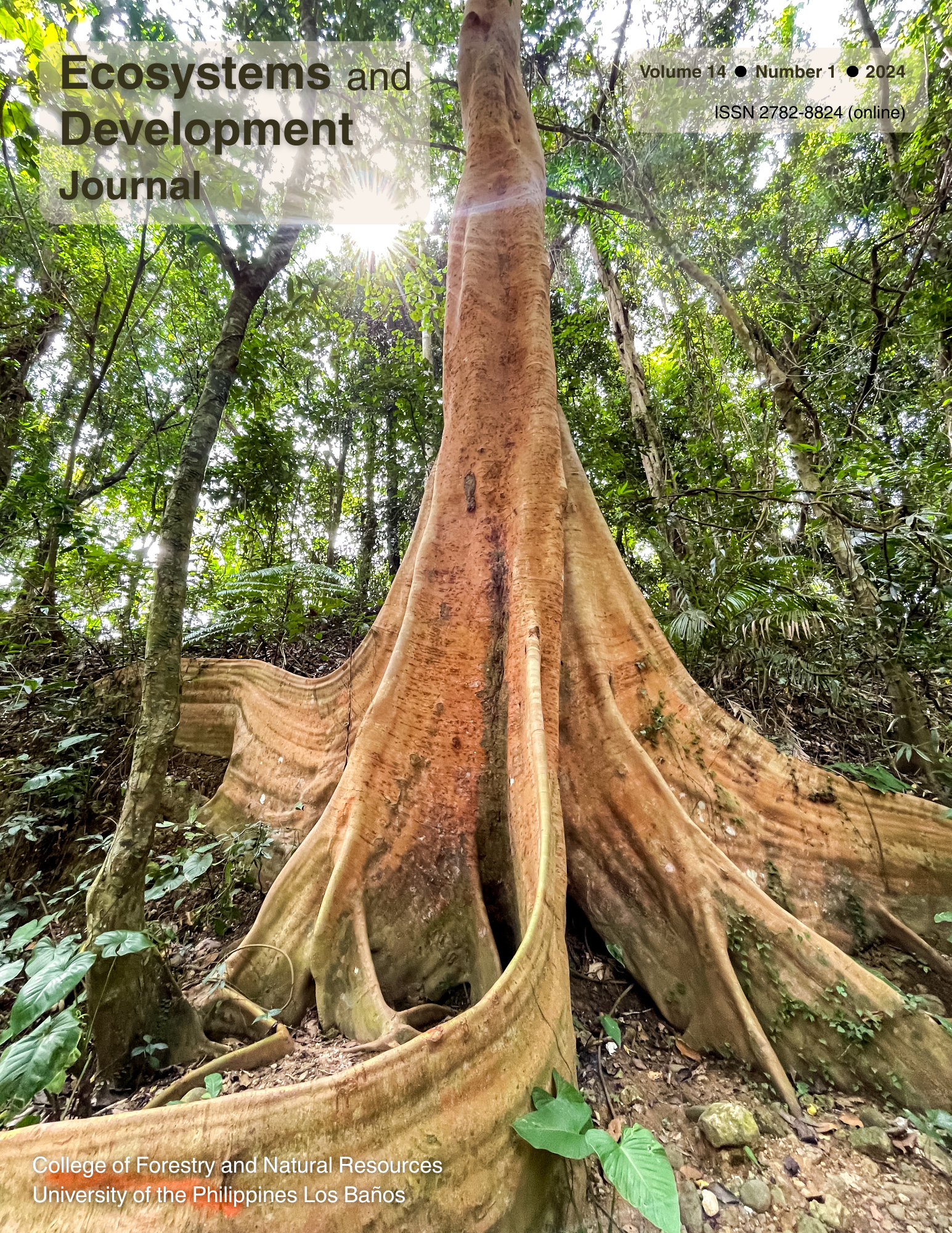Mapping the geographical reach of bamboo products: The case of Pangasinan, Philippines
Abstract
Bamboo is a versatile resource for subsistence, commercial applications, construction, and conservation. Given the economic advantages it offers stakeholders along the value chain, this study focuses on identifying and characterizing the key players in the bamboo industry in Pangasinan, Philippines, while mapping the geographical flow of bamboo products. Fifty-six respondents participated in the research, utilizing a tracking approach to identify marketing channels from production to consumption. Snowball sampling was also employed to identify bamboo processors. Results reveal that the bamboo value chain comprises two main groups of players: upstream (including harvesters of bamboo poles and pole traders/consolidators) and downstream (comprising product processors, product traders/consolidators, wholesalers, exporters, and consumers). Bamboo poles are primarily sourced locally, particularly from Pangasinan and Tarlac. The products produced include nipa huts, various handicrafts (such as winnowing trays, chicken coops, vases, fruit baskets, steamers, and bird feeders), furniture (including sala sets), engineered bamboo items like plaques, and other bamboo products such as chicken cages. The processing of these products involves three key stages: pre-processing (cleaning and straightening poles), assembly, and finishing (sanding, polishing, and applying protective coatings). These bamboo products are sold within the province and through market intermediaries, extending as far as Region I, Region III, Metro Manila, Cavite, Batangas, and the United States. Intermediaries are important for enhancing market reach, and online marketing strategies are effective tools for connecting processors with potential buyers.


